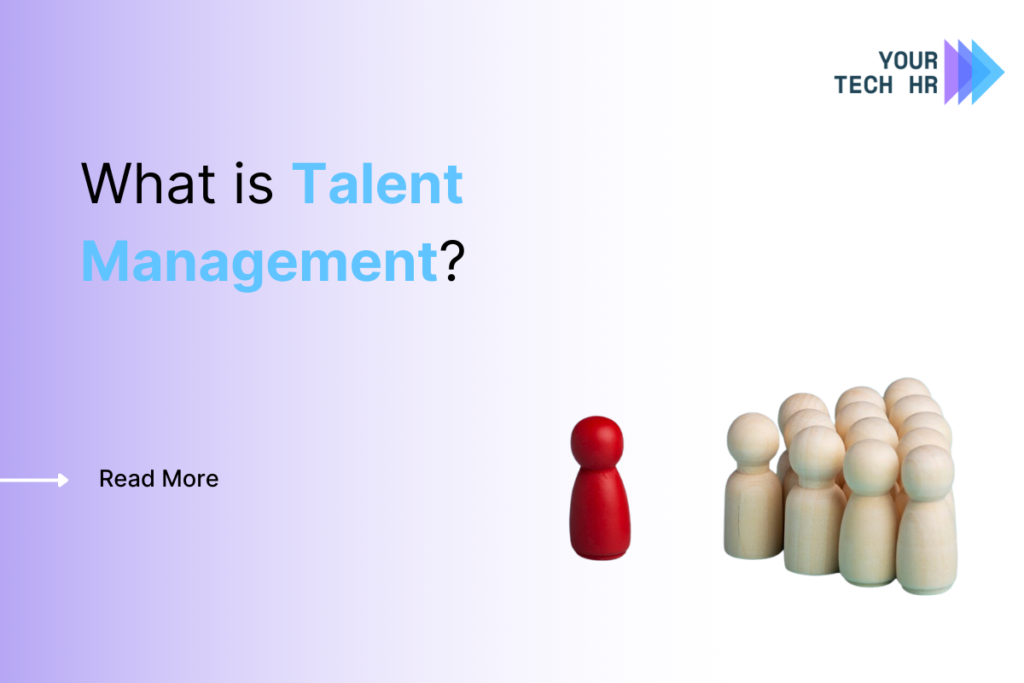In a world where the workforce is constantly evolving and business demands are always changing, organizations are on a relentless quest to attract, develop, and retain top talent. This is where Talent Management comes in – a crucial function within Human Resources (HR) that ensures companies have the right people in the right places to achieve their strategic goals.
But what exactly is talent management, and why is it so critical? This blog dives into the key components of talent management, including talent acquisition, employee development, and performance management, and explains how a well-executed HR strategy can lead to organizational success.
Understanding Talent Management
Talent Management is the process of attracting, developing, and retaining skilled employees to meet an organization’s needs. It involves a series of HR practices that work together to ensure that a company’s workforce is capable, motivated, and aligned with the company’s objectives. Unlike traditional HR functions, which often focus on administrative tasks, talent management is strategic and proactive, aiming to build a strong, agile workforce that can drive long-term success.
The Importance of Talent Management in Organizations
Effective talent management is crucial for several reasons:
- Attracting Top Talent: In a competitive job market, attracting and hiring the best candidates is essential for maintaining a competitive edge.
- Developing Employees: Investing in employee development ensures that your workforce has the skills and knowledge needed to meet evolving business challenges.
- Retaining Key Employees: Retention strategies are critical for keeping top performers and reducing turnover costs.
- Aligning with Business Goals: Talent management aligns the workforce with the organization’s strategic objectives, ensuring that employees are working towards common goals.
- Enhancing Organizational Success: By effectively managing talent, organizations can boost productivity, improve employee engagement, and drive overall success.
Key Components of Talent Management
Talent management is a multifaceted process that encompasses several key components, each of which plays a vital role in building a strong workforce.
1. Talent Acquisition
Talent acquisition is the first step in the talent management process. It involves identifying and attracting the right candidates for open positions within the organization. Unlike traditional recruitment, which often focuses on filling immediate vacancies, talent acquisition is a strategic approach that looks at long-term workforce planning and the development of a talent pipeline.
Key aspects of talent acquisition include:
- Employer Branding: Building a strong employer brand is crucial for attracting top talent. A positive brand image makes the organization more appealing to potential candidates.
- Sourcing Strategies: Talent acquisition involves developing effective sourcing strategies to find the best candidates, whether through job boards, social media, or employee referrals.
- Candidate Experience: Providing a positive candidate experience during the hiring process is essential for attracting high-quality candidates and maintaining a strong reputation.
2. Employee Development
Once employees are hired, the focus shifts to employee development. This involves providing employees with the training, resources, and opportunities they need to grow and succeed within the organization. Employee development is not just about improving skills; it’s about fostering a culture of continuous learning and growth.
Key aspects of employee development include:
- Training Programs: Offering training programs, both on-the-job and through external courses, helps employees develop new skills and stay up-to-date with industry trends.
- Career Pathing: Creating clear career paths within the organization helps employees understand the opportunities for advancement and the steps they need to take to reach their career goals.
- Mentorship and Coaching: Providing access to mentors and coaches helps employees navigate their careers and develop leadership skills.
3. Performance Management
Performance management is another critical component of talent management. It involves setting clear expectations for employees, monitoring their performance, and providing feedback and support to help them achieve their goals. Effective performance management ensures that employees are aligned with the organization’s objectives and are continuously improving their performance.
Key aspects of performance management include:
- Goal Setting: Setting clear, measurable goals for employees helps them understand what is expected of them and provides a framework for evaluating their performance.
- Regular Feedback: Providing regular feedback, both positive and constructive, helps employees stay on track and continuously improve their performance.
- Performance Reviews: Conducting formal performance reviews allows for a comprehensive evaluation of an employee’s performance and provides an opportunity for career development discussions.
4. Employee Engagement and Retention
Employee engagement and retention are critical to maintaining a motivated and productive workforce. Engaged employees are more likely to be satisfied with their jobs, perform well, and stay with the organization for the long term.
Key strategies for employee engagement and retention include:
- Recognition and Rewards: Recognizing and rewarding employees for their hard work and contributions helps boost morale and encourages continued high performance.
- Work-Life Balance: Promoting a healthy work-life balance is essential for employee satisfaction and well-being.
- Career Development Opportunities: Offering opportunities for career advancement and professional growth is a key factor in retaining top talent.
5. Succession Planning
Succession planning is the process of identifying and developing future leaders within the organization. It ensures that there is a pipeline of qualified candidates ready to step into key roles as they become available.
Key aspects of succession planning include:
- Identifying High-Potential Employees: Identifying employees with the potential to take on leadership roles in the future is the first step in succession planning.
- Leadership Development Programs: Providing leadership development programs helps prepare high-potential employees for future leadership roles.
- Continuous Assessment: Regularly assessing the readiness of potential successors ensures that the organization is prepared for any changes in leadership.
The Role of HR Strategy in Talent Management
A well-defined HR strategy is essential for effective talent management. The HR strategy should align with the organization’s overall business strategy and provide a roadmap for managing talent in a way that supports the organization’s goals.
Key elements of an HR strategy for talent management include:
- Workforce Planning: Anticipating future workforce needs and developing a plan to meet those needs is a critical part of talent management.
- Diversity and Inclusion: Promoting diversity and inclusion within the workforce is essential for creating a positive work environment and attracting a wide range of talent.
- Data-Driven Decision Making: Using data and analytics to inform talent management decisions helps ensure that strategies are effective and aligned with business goals.
The Impact of Talent Management on Organizational Success
Effective talent management has a direct impact on organizational success. By attracting, developing, and retaining top talent, organizations can improve their overall performance, increase employee satisfaction, and achieve their strategic objectives.
Key benefits of effective talent management include:
- Increased Productivity: A well-managed workforce is more productive, leading to better business outcomes.
- Improved Employee Engagement: Employees who feel valued and supported are more likely to be engaged and motivated to perform at their best.
- Higher Retention Rates: Effective talent management reduces turnover and helps retain top performers, saving the organization time and money on recruitment and training.
- Stronger Organizational Culture: A focus on talent management helps build a positive organizational culture that attracts and retains the best talent.
Conclusion
Talent Management is a strategic and proactive approach to managing an organization’s most valuable asset: its people. By focusing on talent acquisition, employee development, performance management, and employee engagement, organizations can build a strong, agile workforce that drives long-term success. A well-executed HR strategy that aligns with the organization’s goals is essential for effective talent management and can have a significant impact on organizational success.As the business landscape continues to evolve, the importance of talent management will only grow. Organizations that invest in talent management will be better positioned to attract, develop, and retain the talent they need to succeed in the competitive global market.


